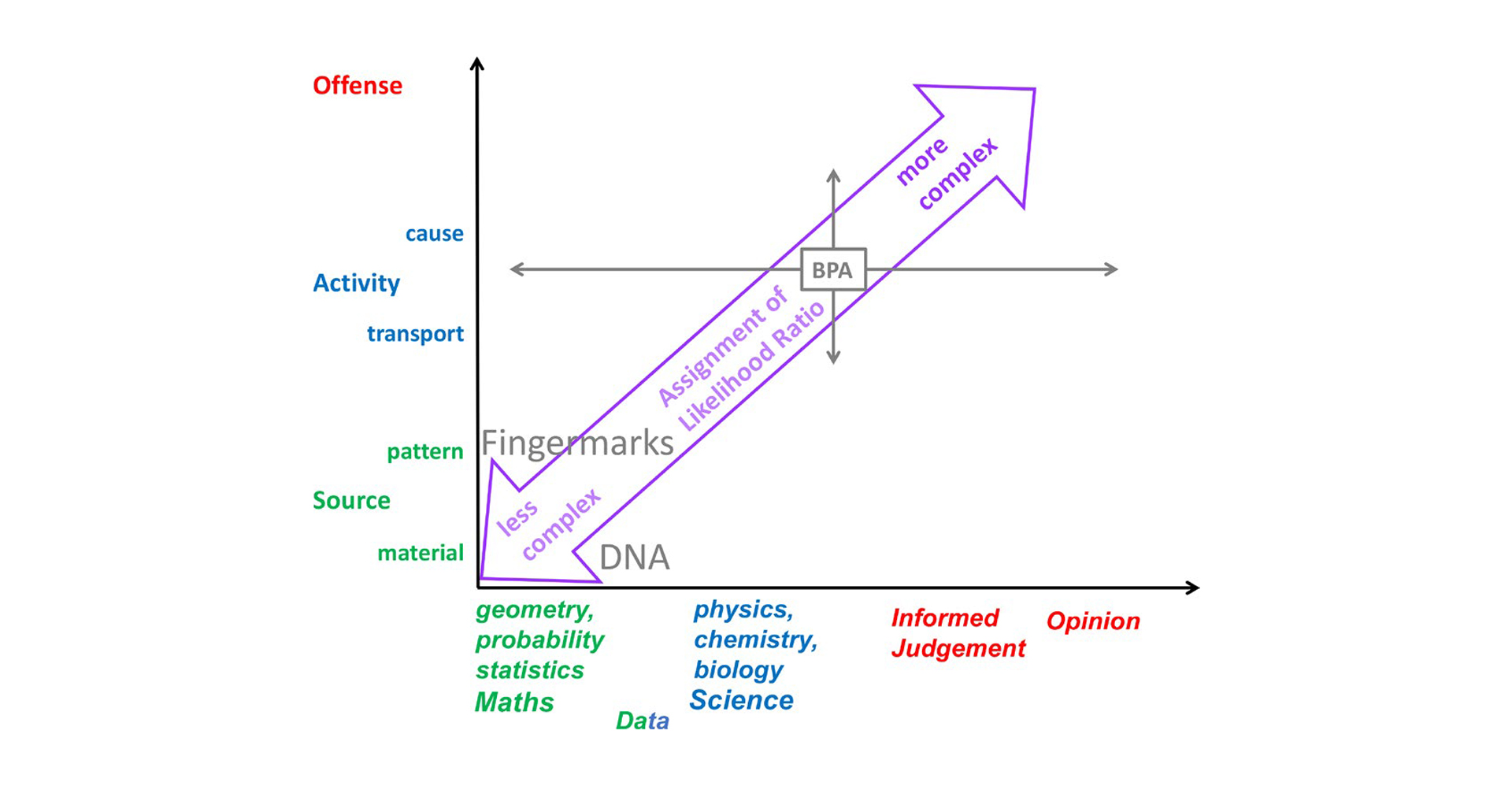In a commentary published by the Journal of Forensic Sciences, Center for Statistics and Applications in Forensic Evidence (CSAFE) researchers explore the challenges and potential solutions for using likelihood ratios in bloodstain pattern analysis (BPA).
The commentary was written by Kris De Brabanter, associate professor of statistics with a joint appointment in industrial and manufacturing systems engineering at Iowa State University; Daniel Attinger, founder of Struo LLC; and Christophe Champod, professor of law, criminal justice and public administration at the University of Lausanne in Switzerland.
Likelihood ratios compare two competing hypotheses to see which fits the evidence better. And when used in reporting forensic evidence in court, have significant advantages since likelihood ratios allow forensic practitioners to consider their findings from the perspective of both the defense and prosecution.
In their commentary, De Brabanter and his colleagues report that even though the likelihood ratio is a useful measure of the weight of forensic evidence, it is rarely used in BPA. They identified several challenges when applying likelihood ratios to BPA, including the methods and knowledge used to evaluate forensic observations.
BPA focuses on questions of activity—how far, in what direction, how long ago—and the determination of the type of activity, rather than questions of source as is normal for most forensic likelihood ratio models. BPA is also a field consisting of a wide range of methods and is a complex science still being built.
Despite these challenges, De Brabanter and his colleagues believe using likelihood ratios in BPA is still possible. They propose three lines of effort in BPA research and training to facilitate and widen the use of likelihood ratios.
The authors note, “A clear benefit of the proposed directions is to root the BPA assessment in a logical and transparent process, a form of evidence-based assessment more than opinion-based.”
Their first recommendation is a better understanding of the physics associated with BPA. This branch of physics, known as fluid dynamics, describes the complex events connecting the cause of a blood pattern and the pattern itself. For example, how do blood drops spread and dry on materials such as fabrics? The researchers state that only recently have peer-reviewed fluid dynamic studies started to uncover the underlying physics of BPA.
“Certainly, a deeper knowledge of the physics involved would improve the ability to associate patterns with their physical cause,” the authors write in the commentary.
The next direction they propose is to create public databases of BPA patterns and promote a culture of data sharing and peer review. De Brabanter and his colleagues explain that developing a culture of sharing and publishing BPA data will contribute to an open-science attitude that is much needed in forensic science. They would like to see this effort involve experimental results from forensic researchers and casework data from practitioners.
Lastly, the authors proposed the development of BPA training materials that discuss the likelihood ratio and its related statistical foundations. In their commentary, they note several areas where significant developments could occur: “Approaches based on LRs may take years to propagate into the methods used in crime scene reconstruction and court testimony: the culture of certainty needs to change; new methods need to be designed and validated based on research findings; the associated uncertainties need to be quantified; practitioners need to be trained to the new methods; and standards of accreditation need to account for these changes.”

Download the journal article and read the insights at https://forensicstats.org/blog/2021/11/21/insights-using-the-likelihood-ratio-in-bloodstain-pattern-analysis/.
CSAFE offers access to many open-source datasets and databases for forensic practitioners and researchers to implement in their labs, including a bloodstain pattern dataset. More information about these resources can be found at https://forensicstats.org/data/.
Learn more about CSAFE’s work on bloodstain pattern analysis and find discipline-specific publications and webinars at https://forensicstats.org/blood-pattern-analysis/.




